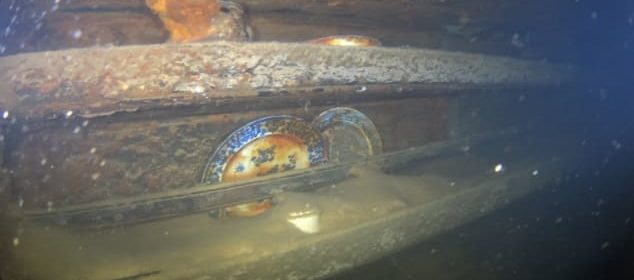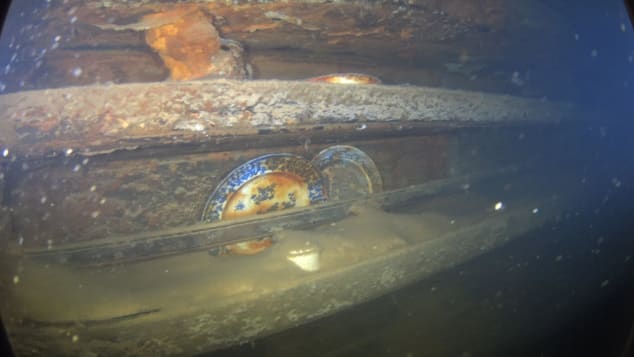Arctic shipwreck reveals new details of tragic 1845 expedition

An Arctic shipwreck ‘frozen in time’ is revealing new details of a tragic 1845 expedition
Canada’s researchers published new photographs of a remarkably well-preserved shipwreck that shed new light on the ill-fated 1845 Arctic expedition in which John Franklin, the famed British explorer, died.
According to Parks Canada, in collaboration with Inuit researchers, the wreck of HMS Terror was effectively “frozen in time” thanks to the cold, deep waters of Terror Bay in Nunavut, Canada, and a layer of silt which has preserved artifacts such as maps, logs and scientific instruments.
In 1845, HMS Terror and HMS Erebus left Britain to search for a route across the Northwest Passage. They stuck in sea ice and forced 129 crew members to abandon the ship in 1848. The men died one by one trying to find survival in the Arctic.
Photos and video footage were gathered using a remotely operated vehicle (ROV), in what the agency describes as “one of the largest, most complex underwater archaeological undertakings in Canadian history.”
Researchers used the ROV to explore 20 cabins and compartments on the ship, the first time the interior of HMS Terror had been systematically explored, according to a Parks Canada statement.

“The impression we witnessed when exploring the HMS Terror is of a ship only recently deserted by its crew, seemingly forgotten by the passage of time,” said ROV pilot Ryan Harris.
The team got images from over 90% of the ship’s lower deck, including living quarters.
The captain’s cabin is the biggest treasure trove – and also the best preserved part of the lower deck – with closed map cabinets, a tripod and a pair of thermometers already identified.
Behind a closed door lies the captain’s sleeping quarters, the only part of the lower deck that archeologists could not explore.
The team believes that written documents will have been preserved because the water temperature is zero degrees Celsius or lower, there is no natural light, and sedimentation helps to preserve organic material such as paper by making for an environment where less oxygen is present.

Marc-André Bernier, manager of underwater archeology at Parks Canada, said the condition of the captain’s cabin greatly surpasses expectations.
“Not only are the furniture and cabinets in place, drawers are closed and many are buried in silt, encapsulating objects and documents in the best possible conditions for their survival,” said Bernier in a statement.
“Each drawer and other enclosed space will be a treasure trove of unprecedented information on the fate of the Franklin Expedition.”
Researchers will now analyze the discoveries on HMS Terror in order to gain a better understanding of what happened on board the ship, and hope to eventually build a picture of the lives of individual crew members.
“The excellent condition of the ship will, I hope, mean that there will soon be answers to so many questions about the fate of the Franklin Expedition, shrouded in mystery since 1845,” said Susan Le Jeune d’Allegeershecque, British High Commissioner to Canada.
Canada and the Inuit will jointly own the new-found artifacts from HMS Terror and HMS Erebus under a 2018 agreement.
HMS Terror was spotted on the sea bed off King William Island in September 2016, and HMS Erebus was found in September 2014.
Franklin’s last expedition was “the worst disaster in the history of British polar exploration,” according to the Royal Museums Greenwich.